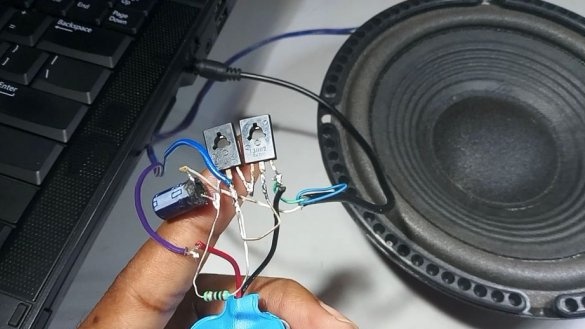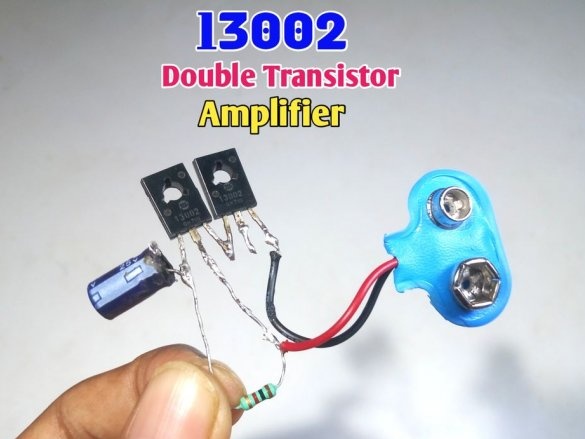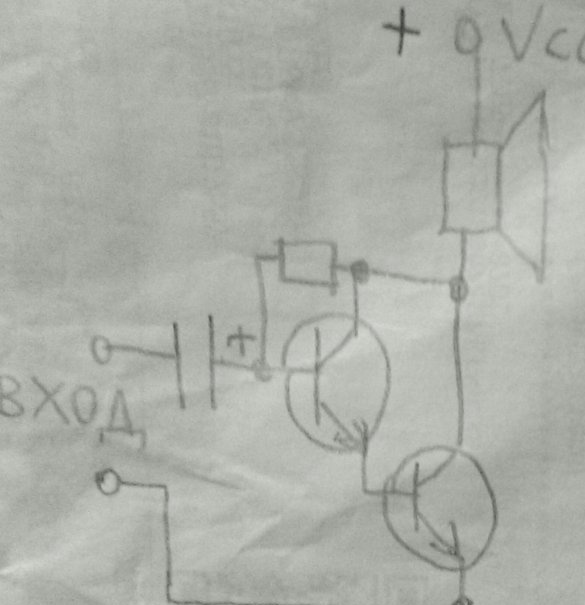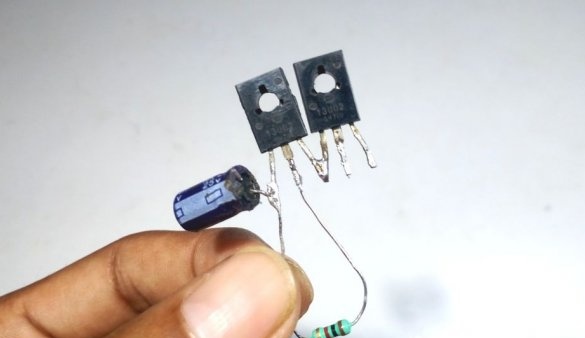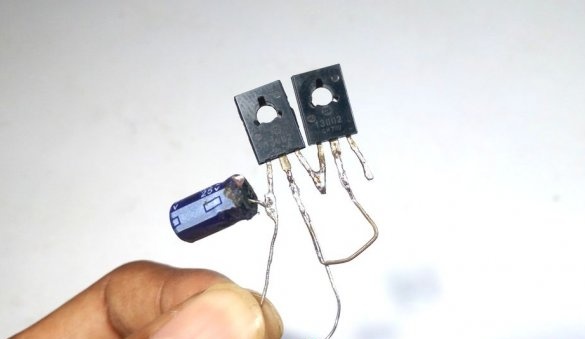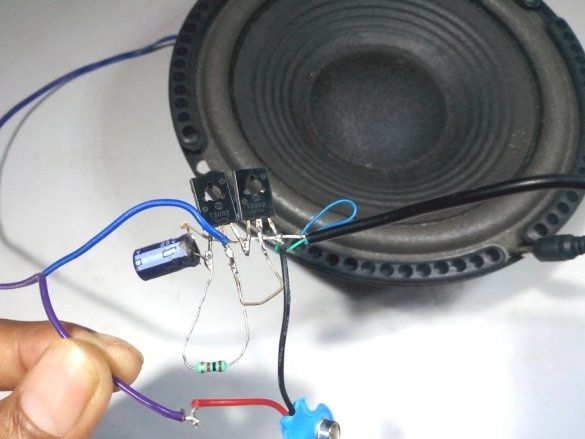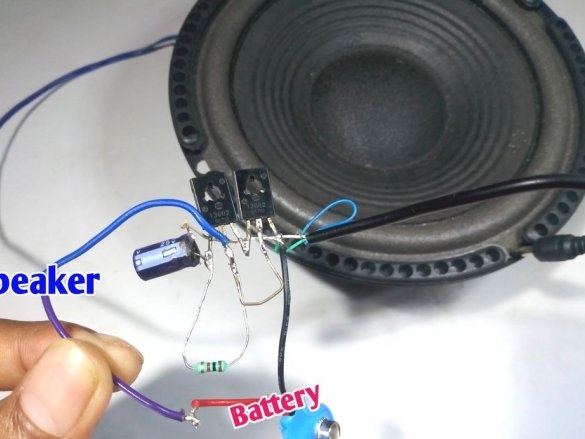Although compact fluorescent lamps are already unpopular, many craftsmen have accumulated boards from them. Among other components, there are transistors of types 13001, 13002, 13003. Although they are considered key, it is not difficult to transfer them to linear mode in the generally accepted way, while the output power is, of course, small. So, for example, the author of Instructables under the nickname Utsource123 assembled a composite of two such transistors (it is also called the Darlington transistor, which made the corresponding invention in 1953) and built on it a simple single-ended audio-frequency power amplifier (UMZCH).
Since the master decided not to make an amplifier circuit, the translator had to restore it from the description and photos. The result was the most ordinary UMZCH circuit on a composite transistor without any features. On old MP transistors, it would look exactly the same. Given the opposite structure, of course.
The bias to the base by the resistor, the capacitor, so that this bias does not get into the signal source - everything is as usual. 100 uF capacitor, 25 V, 1 kOhm resistor.
First of all, the master acquaints readers with the pinout of transistor 13002:
Then, as it should be when assembling two transistors of one composite, it connects the emitter of the first transistor with the base of the second. Well, they are just located nearby.
Solder the bias resistor between the collector and the base of the first transistor. Thanks to him, both transistors will work in linear mode.
Connects to the base of the first transistor the positive output of the capacitor:
Connects the collectors of both transistors with a jumper:
Connects a signal cable: the common wire is soldered to the emitter of the second transistor, and the output of any of the stereo channels to the negative terminal of the capacitor:
One terminal of the dynamic head connects to the power plus, the second - with the collectors of both transistors connected together. Less power is supplied to the emitter of the second transistor.
The amplifier is ready to go. If you do not add a volume control to it, you will have to take a signal source in which there is a corresponding control.And you can listen.
Gathering a second amplifier of the same type and applying a signal from another stereo channel to it will give you a stereo effect.

